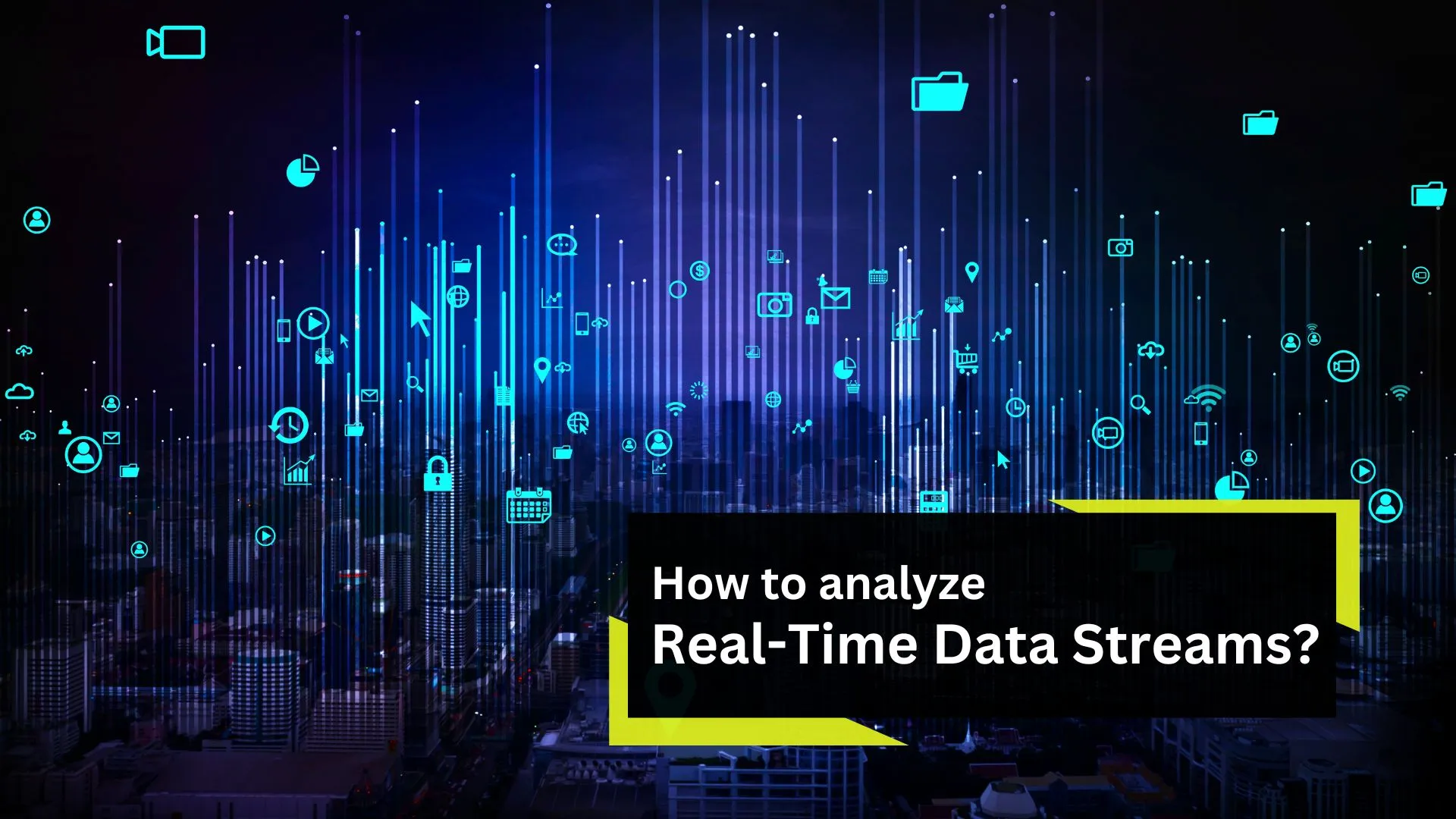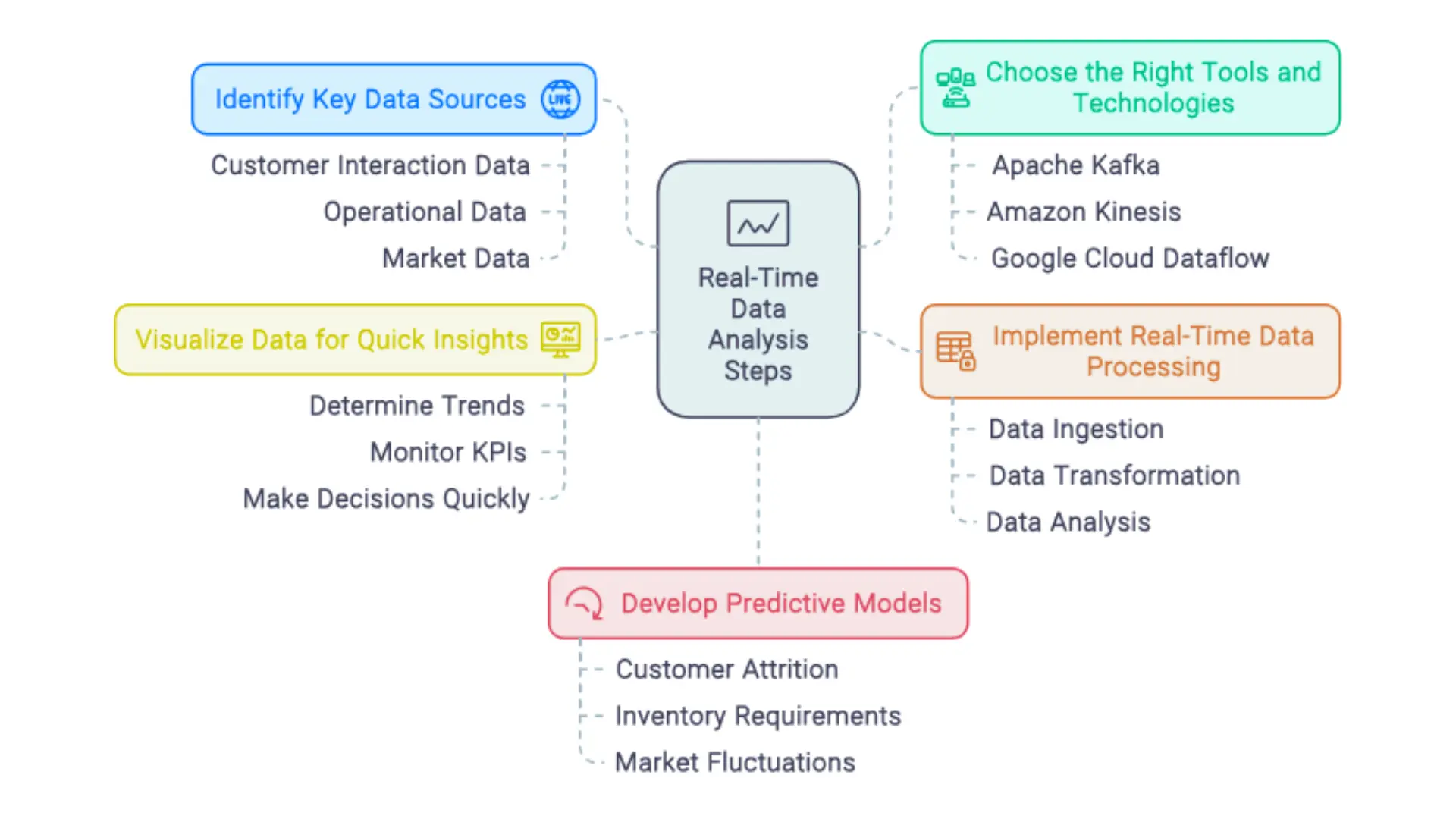
The capacity to swiftly assess and respond to real-time data streams might give a competitive advantage in today's hectic corporate world. Real-time data provides priceless insights that can completely change the way you make decisions, whether you're measuring supply chain efficiency, forecasting market trends, or keeping an eye on customer behavior. In order to make sure that your company can take advantage of the potential that real-time data streams bring, this article will walk you through the fundamentals of evaluating them.
Continuous data flows produced by a variety of sources, including financial markets, social media, sensors, and more, are known as real-time data streams. Real-time data is processed as soon as it is received, in contrast to typical batch processing, which gathers, stores, and analyzes data later. Businesses are able to make educated judgments, respond quickly to changes, and even forecast future events because to this instantaneous processing.
Why Analyzing Real-Time Data is Crucial for several reasons:

Before you start analyzing, it's essential to identify which data streams are most relevant to your business. These could include:
Knowing where your data comes from helps you focus on the most valuable streams and avoid being overwhelmed by irrelevant information.
Real-time data analysis efficacy is largely dependent on the technology and tools you employ. Among the widely used instruments are:
By using the appropriate tools, you can ensure that your data is handled quickly and efficiently, enabling you to gain insights more quickly.
Setting up real-time data processing is the next step after selecting your tools. Usually, this includes:
Real-time data processing frameworks like Apache Flink or Spark Streaming can handle these tasks efficiently, ensuring that your data is ready for analysis as soon as it arrives.
Understanding real-time data requires the use of visualization. With the aid of programs like Tableau, Power BI, or Google Data Studio, you can generate dashboards that present data in an aesthetically pleasing manner. Through data visualization:
Predictive models enable businesses to anticipate future patterns based on historical and real-time data, going beyond simply examining current data. In order to forecast events like customer attrition, inventory requirements, or market fluctuations, machine learning algorithms can be trained on data streams. Proactive decision-making is made possible by these models, which aid companies in staying ahead of possible problems.
Although real-time data stream analysis has many advantages, there are drawbacks as well:
Real-time data analysis is not a luxury but a need in today's business environment. Businesses may enhance consumer experiences, stay competitive, and make well-informed decisions by proficiently evaluating real-time data sources. By putting the appropriate tools in place, concentrating on pertinent data, and continuously streamlining your operations, you can fully utilize real-time data and advance your company.
How can I start analyzing real-time data streams for my business?
To start, identify the key data sources relevant to your business, choose the right tools like Apache Kafka or Amazon Kinesis, and set up real-time data processing. Focus on relevant data, ensure data quality, and use visualization tools to gain quick insights.
What tools are best for real-time data analysis?
Popular tools include Apache Kafka for distributed streaming, Amazon Kinesis for real-time data processing, and Tableau or Power BI for data visualization.
How do I ensure data quality in real-time analysis?
Regularly clean and validate your data, use data transformation tools, and monitor the integrity of incoming data streams to maintain high data quality.
What are the challenges of analyzing real-time data?
Challenges include managing the high volume and velocity of data, minimizing latency, and handling the complexity of setting up and maintaining real-time data systems.
Why is real-time data analysis important for businesses?
Real-time data analysis allows businesses to make timely decisions, improve customer experiences, enhance operational efficiency, and gain a competitive advantage.
Can small businesses benefit from real-time data analysis?
Yes, small businesses can benefit by using scalable tools and focusing on key data streams that directly impact their operations and customer interactions.
Your email address will not be published. Required fields are marked *
Loading questions...
